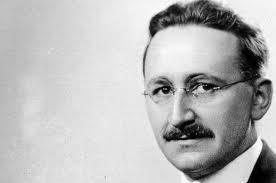 It’s not all politics at Westminster. There’s a pretty good think-tank scene
too, with lectures on topics that you’re unlikely to read about in the newspapers. One took place today: the Adam Smith Institute hosted a lecture by Steven G. Horwitz, from St. Lawrence University, entitled “An Austrian
perspective on the great recession of 2008-09”. As many CoffeeHousers will know, “Austrian” refers to von Mises, Hayek and the others whose analysis of bubbles and crises certainly
seems to fit current events. My colleague Jonathan Jones was there, and took some notes – which I have moulded into a six-point briefing. It’s not often we do a post based on a
think-tank talk – we may do more, if CoffeeHousers find them useful. These are notes, as opposed to direct quotes:
It’s not all politics at Westminster. There’s a pretty good think-tank scene
too, with lectures on topics that you’re unlikely to read about in the newspapers. One took place today: the Adam Smith Institute hosted a lecture by Steven G. Horwitz, from St. Lawrence University, entitled “An Austrian
perspective on the great recession of 2008-09”. As many CoffeeHousers will know, “Austrian” refers to von Mises, Hayek and the others whose analysis of bubbles and crises certainly
seems to fit current events. My colleague Jonathan Jones was there, and took some notes – which I have moulded into a six-point briefing. It’s not often we do a post based on a
think-tank talk – we may do more, if CoffeeHousers find them useful. These are notes, as opposed to direct quotes:
1. The Austrian Business Cycle Theory is necessary but not sufficient to explain the recession. Think of it as a car pile-up. Imagine we see an enormous rise in the number of traffic accidents in a major city. Cars keep colliding at intersections as drivers all seem to make the same sorts of mistakes at once. Is the most likely explanation that drivers have irrationally stopped paying attention to the road, or would we suspect that something is wrong with the traffic lights? Even with completely rational drivers, malfunctioning traffic signals will lead to lots of accidents. Keeping interest rates artificially low is like getting all the lights stuck on green.
2. The crash has nothing to do with greed. Or, rather, greed is no more to blame for these bad mortgages than gravity is to blame for plane crashes. Gravity is always present, just like greed.
3. Blame artificially low interest rates. They may create a feel-good factor, as people fill their homes with cheap stuff. But they wrongly incentivise borrowing, causing a boom followed by a bust. Interest rates are, of course, set by central banks who don’t get it right, and actually can’t. Central banks have an incentive to inflate, to cheapen the cost of government borrowing.
4. Deregulation was not the culprit. From 1980-2009 in the US, there were 4 new regulatory policies for every 1 deregulatory policy. (FN note: God knows what the ratio was in Britain, but the below graph shows the number of pages in the Tolley’s Tax Guide. This is a rough indicator).

5. Lessons for recovery. Bailouts and stimuli are not the answer. We need to let the healing take place and encourage savings that create capital and wealth. We do not need a “recovery plan” – recession is the recovery. Experimentation is not the answer, as it creates uncertainty. There has been an over-reaction of monetary policy. A massive increase in the money supply & the Fed’s increased powers bring a severe risk of inflation.
6. So what can we do? In the short-run: encourage hiring across the board (e.g. in the US, suspend payroll tax). We can suspend capital gains tax to encourage investment. We can sell off government stakes in GM and the banks, and stop bashing profit-seeking behaviour. And in the long-run: limit the powers of the central bank. Consider stronger thresholds for major fiscal policy decisions (e.g. supermajorities or balanced-budget requirements). And, finally, end subsidies.
Now, why post this on Coffee House? In truth, we baristas are a little nervous about the lack of proper analysis after the crash, and the speed with which everyone blamed it on the bankers. In doing so, everyone carries on as before – not asking if an intellectual error might be at the root of the crash, that this idea of equating stability with consumer price inflation may have turned out to be rather dangerous. Focusing on the supply of money, and the rate of interest and debt, is a rival theory which says the problem was the bubble – and the banks were a needle. We should not ask what pricked the bubble, but what inflated it in the first place. The Austrian school is, for me anyway, one way of looking at this very important question.







Comments